The first phase of every design project is developing the program.
Programming involves deciphering the needs, wants, and goals of the project.
What do you want to achieve? What are your must-haves? What look or feel do you want to create? What activities must happen in this space? Who uses this space and what needs do these individuals have? What color do you love most, and how would you like it reflected in this space? What are you thinking of spending for this project?
The questions can go on and on.
Sometimes clients are ready with answers to all these questions and more. Sometimes clients need more time to come up with answers. Sometimes some of these items contradict each other - like the list of must-haves and budget. :-)
The programming phase is where all questions are answered.
Then, once everything is hashed out, we basically have our program — aka: our parameters of the project; our directives. With these items figured out, we can begin to wrap ourselves around your project and develop a design that takes into consideration all of your parameters and builds a solution — a solution that has some magic. :-)
When we visit a client for the first time, we listen. We take notes. We take some pictures to help us remember your space.
After all the agreements are signed, budgets and fees are discussed, and we're ready to start your project, we make a list from those notes of your defined goals.
Personally, as I’m developing a design, it really helps me to sort through all the extraneous words and see in bold letters: “Needs tile floors for maintenance” or “Wants long draperies in a bold color for living room.”
If you’re starting a project yourself...
I recommend developing a bulleted list of must-have items, a list of wants, and a list of things you’d love to have as something extra but could live without.
Next take a look at your lists, realistically considering the attributes of your space, your square footage, your budget, and then weed out extraneous items that are impossible. Things like: a Viking range and Subzero fridge for a kitchen that has a remodeling budget of $20,000; or a large custom shower in a small bathroom where you don’t have any space to grow.
Once you have your list, you can proceed into the Schematic Design phase, all the while keeping everything in consideration and close at hand. During the process of design you may filter your list even more, realizing that some items may be more doable than others, or that new possibilities suddenly become apparent right before your eyes.
At the end of the day, just make sure you keep an open mind and have fun creating!
We certainly do!
RELATED: Want to see what the next step is? Check out Schematic Design, described in this post.



